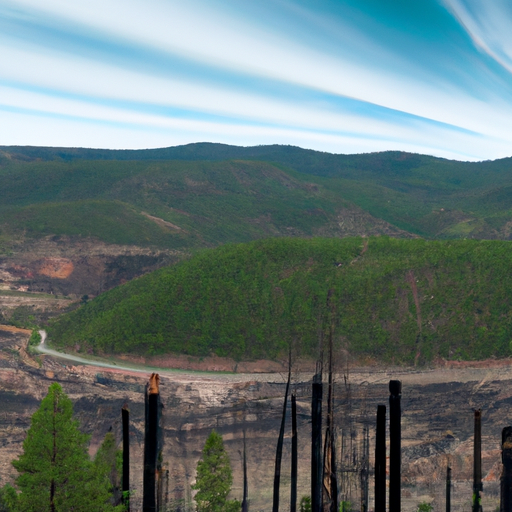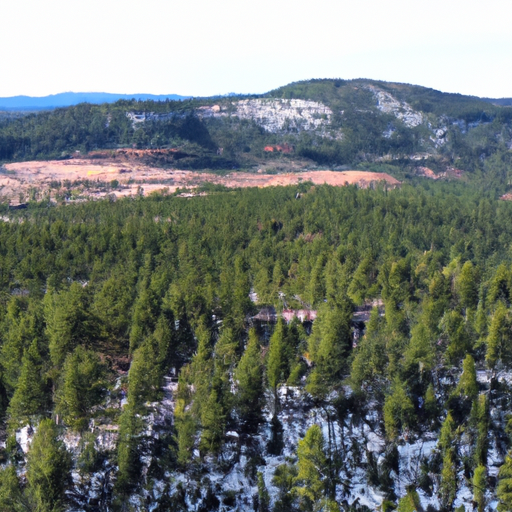
The Impact of Remote Work on Central Oregon’s Economy
The COVID-19 pandemic has brought about significant changes in various aspects of our lives, and one area that has experienced a major shift is the way we work. With the rise of remote work, Central Oregon has seen a remarkable impact on its economy. This article will explore the changing trends in Central Oregon after the pandemic, focusing on the influence of remote work.
Before the pandemic, Central Oregon’s economy heavily relied on industries such as tourism, hospitality, and outdoor recreation. However, with travel restrictions and social distancing measures in place, these sectors took a massive hit. Many businesses were forced to close their doors temporarily, and some even had to shut down permanently. The future looked uncertain for Central Oregon’s economy.
But amidst the challenges, remote work emerged as a game-changer. As companies adapted to the new normal, they quickly realized the benefits of allowing their employees to work from home. This shift not only ensured business continuity but also opened up new opportunities for both employers and employees.
One of the most significant impacts of remote work on Central Oregon’s economy is the influx of remote workers from major cities. As people realized they could work from anywhere, many chose to relocate to areas with a better quality of life. Central Oregon, with its stunning natural beauty and outdoor recreational opportunities, became an attractive destination for these remote workers.
This migration of remote workers has had a positive effect on the local economy. With more people moving to the area, there has been an increased demand for housing, leading to a surge in the real estate market. Home prices have skyrocketed, and construction companies are thriving as they work to meet the demand for new housing.
Additionally, the presence of remote workers has boosted the local economy in other ways. These individuals bring their skills, expertise, and purchasing power to the region, supporting local businesses and contributing to the overall economic growth. Restaurants, cafes, and retail stores have seen an uptick in customers, and the hospitality industry is slowly recovering as tourists visit the area to explore its natural wonders.
Moreover, the rise of remote work has also given birth to a new breed of entrepreneurs in Central Oregon. With the flexibility to work from anywhere, many individuals have taken the opportunity to start their own businesses. From freelancers to small startups, these entrepreneurs are injecting innovation and creativity into the local economy.
However, it’s important to note that the impact of remote work on Central Oregon’s economy is not without its challenges. The surge in housing prices has made it difficult for some locals to afford homes, leading to concerns about affordability and gentrification. Additionally, the strain on infrastructure, such as internet connectivity and transportation, needs to be addressed to support the growing remote workforce.
In conclusion, the COVID-19 pandemic has brought about significant changes in Central Oregon’s economy, with remote work playing a crucial role. The influx of remote workers has boosted the local economy, driving demand in the housing market and supporting local businesses. It has also given rise to a new wave of entrepreneurs, injecting innovation into the region. However, challenges such as housing affordability and infrastructure need to be addressed to ensure sustainable growth. As Central Oregon adapts to the changing trends, it has the potential to emerge stronger and more resilient in the post-pandemic world.
Outdoor Recreation and Tourism in Central Oregon Post-Pandemic

The pandemic has undoubtedly had a significant impact on various aspects of our lives, including outdoor recreation and tourism. Central Oregon, known for its stunning landscapes and abundance of outdoor activities, has experienced a shift in trends as we navigate the post-pandemic era.
One noticeable change is the increased interest in outdoor activities. With restrictions on indoor gatherings and a greater emphasis on social distancing, people have turned to the great outdoors for solace and adventure. Central Oregon, with its vast wilderness and natural beauty, has become a haven for those seeking to reconnect with nature.
Hiking and biking trails have seen a surge in popularity. People are lacing up their hiking boots and strapping on their helmets to explore the region’s breathtaking landscapes. From the towering peaks of the Cascade Mountains to the serene beauty of the Deschutes River, there is no shortage of awe-inspiring sights to discover.
Camping has also experienced a resurgence. After months of being cooped up indoors, people are eager to pitch their tents and sleep under the stars. Central Oregon’s numerous campgrounds provide the perfect opportunity to escape the hustle and bustle of daily life and immerse oneself in the tranquility of nature.
In addition to traditional outdoor activities, there has been a rise in interest in more unconventional pursuits. Stand-up paddleboarding, for example, has gained popularity as a fun and unique way to explore the region’s lakes and rivers. The calm waters of Sparks Lake and the Deschutes River offer the perfect conditions for this exciting water sport.
Another trend that has emerged is the desire for more secluded and off-the-beaten-path destinations. While popular tourist spots like Bend and Sunriver still attract visitors, many are now seeking out lesser-known areas that offer a quieter and more intimate experience. Places like Smith Rock State Park and the Ochoco National Forest provide a sense of solitude and serenity that is increasingly sought after.
Central Oregon’s tourism industry has also adapted to the changing landscape. Local businesses and tour operators have implemented safety measures to ensure the well-being of visitors. From enhanced cleaning protocols to smaller group sizes, these measures have instilled confidence in travelers and allowed them to enjoy their outdoor adventures with peace of mind.
Furthermore, there has been a shift towards sustainable and responsible tourism practices. Travelers are increasingly conscious of their impact on the environment and are seeking out eco-friendly options. Central Oregon, with its commitment to preserving its natural resources, has become a magnet for those who want to explore while minimizing their ecological footprint.
As we move forward in the post-pandemic era, it is clear that outdoor recreation and tourism in Central Oregon will continue to evolve. The newfound appreciation for nature and the desire for more meaningful experiences will shape the way we explore and enjoy this beautiful region. Whether it’s hiking through ancient forests, casting a line in pristine rivers, or simply taking in the breathtaking views, Central Oregon offers endless opportunities for adventure and rejuvenation. So pack your bags, grab your hiking boots, and get ready to embark on a journey of discovery in this ever-changing outdoor paradise.
Shifts in Real Estate and Housing Market in Central Oregon
The COVID-19 pandemic has had a profound impact on various aspects of our lives, and the real estate and housing market in Central Oregon is no exception. As people adapt to the new normal, there have been noticeable shifts in trends and preferences when it comes to buying or renting properties in this beautiful region.
One of the most significant changes in the housing market is the increased demand for larger homes with more outdoor space. With remote work becoming more prevalent, many individuals and families are looking for properties that can accommodate home offices and provide ample room for outdoor activities. Central Oregon, with its stunning natural landscapes and abundance of outdoor recreational opportunities, has become an attractive destination for those seeking a healthier and more balanced lifestyle.
Another trend that has emerged is the rise in interest for properties in suburban and rural areas. As people reassess their priorities and seek a change of scenery, they are increasingly drawn to the tranquility and open spaces that these areas offer. Central Oregon, with its small towns and close-knit communities, provides a sense of security and a slower pace of life that many find appealing.
Additionally, there has been a surge in demand for vacation homes and investment properties in Central Oregon. With travel restrictions and uncertainties surrounding international travel, many individuals are opting for domestic vacations and investing in properties that can serve as both a personal getaway and a potential source of rental income. Central Oregon’s natural beauty, outdoor recreational opportunities, and proximity to popular tourist destinations like Bend and Sunriver make it an ideal location for such investments.
However, these changing trends in the housing market have also presented challenges. The increased demand for properties has led to a shortage of available homes, driving up prices and creating a competitive market for buyers. This has made it more difficult for first-time homebuyers to enter the market and has forced many to consider alternative options such as renting or exploring neighboring areas.
Furthermore, the pandemic has also highlighted the need for affordable housing in Central Oregon. As the cost of living continues to rise, many individuals and families are struggling to find affordable housing options that meet their needs. This has prompted local governments and organizations to prioritize the development of affordable housing projects and explore innovative solutions to address this issue.
In conclusion, the COVID-19 pandemic has brought about significant shifts in the real estate and housing market in Central Oregon. The increased demand for larger homes with outdoor space, the rise in interest for suburban and rural areas, and the surge in demand for vacation homes and investment properties are all indicative of the changing preferences and priorities of buyers and renters. However, these trends have also presented challenges such as a shortage of available homes and the need for affordable housing. As the region continues to adapt to the post-pandemic landscape, it is crucial for stakeholders to work together to ensure a sustainable and inclusive housing market that meets the diverse needs of the community.


